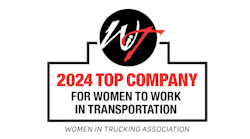Trailers are poised to receive a host of technological improvements as the industry seeks to upgrade safety, productivity, and fuel efficiency in one fell swoop, according to new research from global consulting firm Frost & Sullivan.
In a new report authored by Wallace Lau, a trucking research analyst with the firm’s global commercial vehicle research practice, trailer production volumes are expected to stay relatively flat over the next six years, peaking at 255,500 units in 2103 before slipping to 242,100 units by 2018.
Yet Lau told Fleet Owner that longer ownership cycles – expected to average 8.5 years – is one reason why demand for new trailer units will flat line to a degree, even as “technological innovation” increases significantly.
“The proliferation of advanced semi-trailer technologies will be driven by three crucial factors: strengthening regulatory environment, rising fuel prices, and an aging trailer population,” he explained.
“Trailers historically have been neglected when it comes to technological improvements; improvements largely limited to telematics,” Lau pointed out. “But now trailers are becoming a much more important piece of the efficiency puzzle as advanced technologies are added to them to improve fuel efficiency and make them safer, especially in light of the new CSA [Compliance Safety Accountability] rules.”
Lau argued that the strict standards of CSA are stimulating interest in safety systems such as automatic tire inflation systems; a technology expected to have a 48% market penetration rate in 2018.
Also, while brake and suspension markets should generate nearly 60% of total advanced technology related revenues within the trailer market by 2018, and the penetration of aerodynamics improvement technologies will also significantly increase between 2012 and 2018.
That’s in no small part due to California Air Resources Board (CARB) fuel efficiency mandates for 53-foot dry van trailers, said Lau; a regulatory initiative that should help boost trailer aerodynamics usage to 56% of the market by 2018.
“OEM installed trailer aerodynamic systems should also rise as well to comprise 18% to 20% of the market for those solutions,” he added. “Rising fuel prices have become such a huge factor now that it’s outpacing the regulatory driver of aerodynamic system adoption to a degree.”
Yet Lau noted that the fastest and strongest revenue growth opportunities where trailer technology is concerned will be accorded by safety and telematics technologies over the next six years.
“CSA is a huge driver here, in terms of stopping distances, vehicle maintenance requirements, and productivity needs,” he said. “Fleets are exploring air disc brakes, air ride suspensions, tire pressure monitoring systems (TPMS), and electronic stability control (ESC) to name just a few.”
One problem in all of this, Lau contended, is that there are just too many technologies chasing too few dollars, as fleet and owner-operator margins remain very thin. Therefore, those trailer makers who can offer multiple technologies in one cost-effective package – in effect mirroring the “vertical integration” efforts occurring on the truck side of the business – should gain market advantage.
“Fleets especially are willing to spend more upfront on trailers to get a better, more efficient and safer product – but they will pick and choose what best fits their needs,” he added. “They are still looking to the future at trying to lower their total cost of operation by adopting a range of new trailer technologies.”








